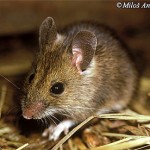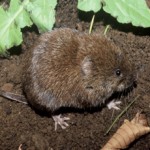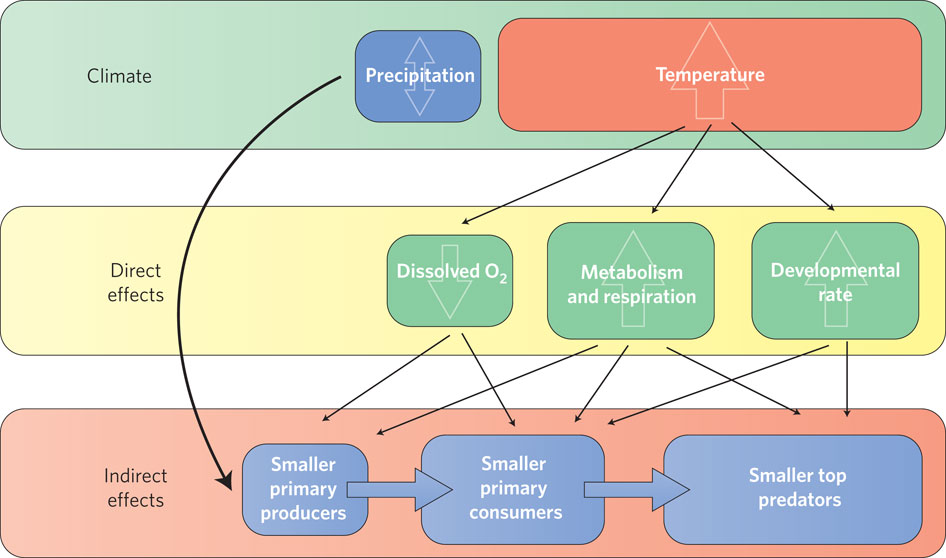Apart from the Soay sheep, the variation in body size of other species has been correlated with climate change. Let us highlight that this variation can be a decrease in body size or an increase: both situations have been observed across different regions and different species.
In a study conducted by zoologist Yoram Yom-Tov from University of Tel-Aviv, it was revealed that shrews in Alaska have been getting bigger because allegedly, thanks to warmer weather, they have been able to conserve energy they used to use to maintain their body temperature. This contradicts Bergmann’s rule which basically states that animals living in warmer weather will be smaller than animals living in colder weather.

Apodemus speciosus

Eothenomys smithii
As a matter of fact, Yom-Tov has studied many different species’ evolution in size. A similar trend in growth was observed among two species of Japanese rodents in 2004, by measuring the dimensions of their skulls. Again this variation was linked with the rise of temperatures, the ability to conserve energy and also higher food availability.
Researchers David Bickford and Jen Sheridan of the National University of Singapore published an article in 2011 stating that shrinking could be species’ response to global warming. They focused on the case of ectotherms (whose body temperature is regulated by ambient temperature, unlike endotherms, who can regulate their body temperature) whom they believe could be threatened by extinction if temperatures were to continue rising. As temperatures go up, ectotherm organisms’ metabolism (basically the amount of food they need for X amount of energy) rises too, increasing their need for food. The energy from the food can be used for reproduction, physiological maintenance and growth. With food availability remaining the same, growth will be naturally limited in favour of reproduction and maintenance. However, the authors do recognize that there are exceptions to the shrinking trend, for example in regions where the increase in temperature and precipitation causes increase in primary productivity (which impacts food availability). They also state that predators with a large prey base (and thus more potential sources of nutrition and energy) could grow in body size.
Australian researcher Dr Janet Gardner from the Australian National University has been observing the size of birds — by measuring their wing length for instance. In a century, this length has decreased by 4%, due to an environmental change –according to her, most probably global warming. This change in size isn’t negligible, and may cause disruption in the ecological system — a conclusion similar to Sheridan and Bickford’s. Gardner also adds that this change in size may be evidence that animals are adapting to climate change. However, if that is the case, it isn’t necessarily good news, as the physiological adaptation may not be optimal for their survival.

